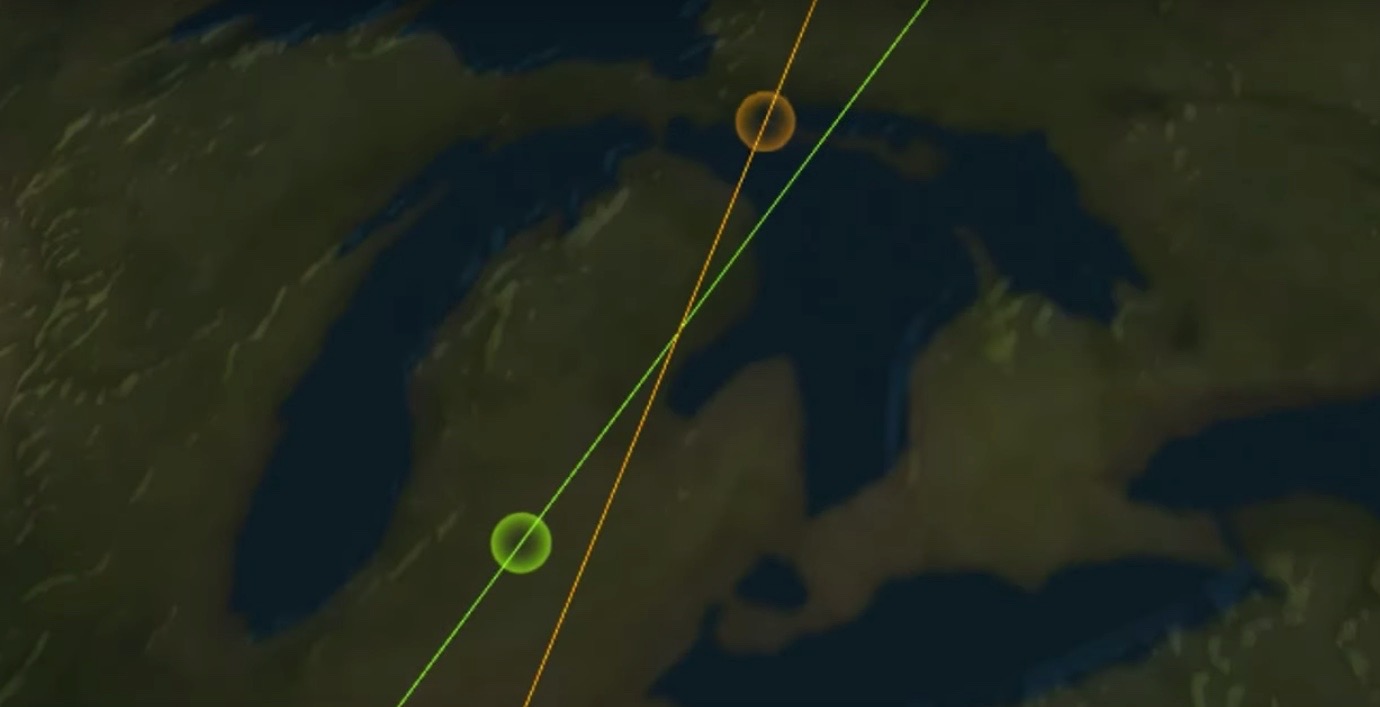The odds of a space-junk crash this evening (Jan. 29) aren't as slim as we had thought, it turns out.
Two dead satellites — the Infrared Astronomical Satellite (IRAS) and the Gravity Gradient Stabilization Experiment (GGSE-4) — will zoom past each other today in the skies above Pittsburgh, analyses by California-based company LeoLabs indicate.
As of Tuesday (Jan. 28), LeoLabs' calculations suggested that the two craft would miss each other by from 43 feet to 285 feet (13 to 87 meters) at closest approach, which will occur at 6:39 p.m. EST (2339 GMT). And the probability of a smashup was quite low — just 0.1%.
Video: Watch how close NASA's IRAS and GGSE-4 satellites will get
Related: Space junk cleanup: 7 wild ways to destroy orbital debris

But the latest outlook isn't quite so rosy. Additional calculations suggest that the two objects will miss each other by a mere 39 feet (12 m), LeoLabs announced via Twitter this morning. And the chance of an impact is now back up around 1%, as LeoLabs had calculated earlier this week — but might even be as high as 5%.
"Since we learned that GGSE 4 has a deployed 18-m boom and we do not know which direction it is facing relative to IRAS, this changes the assumptions used in computing collision risk," company representatives explained in a tweet this morning.
Get the Space.com Newsletter
Breaking space news, the latest updates on rocket launches, skywatching events and more!
"Adjusting our calculations to account for larger object sizes (by increasing our combined hard body radius from 5 m to 10 m), this yields an updated collision probability closer to 1 in 20," they wrote in another tweet.
4/ Adjusting our calculations to account for larger object sizes (by increasing our combined Hard Body Radius from 5m to 10m), this yields an updated collision probability closer to 1 in 20.January 29, 2020
The nearly 2,400-lb. (1,090 kilograms) IRAS, a joint project involving NASA, the Netherlands and the United Kingdom, launched in January 1983 to study the heavens in infrared light. Its mission ended 10 months later.
GGSE-4, which weighs just 190 lbs. (85 kg), was lofted in 1967 and ceased operations in 1972. The little satellite was a U.S. National Reconnaissance Office craft that collected signals intelligence, according to Jonathan McDowell, an astronomer at the Harvard-Smithsonian Center for Astrophysics who keeps tabs on many of the objects circling Earth. And GGSE-4 was just a cover name; the satellite's true moniker was POPPY 5B, McDowell said.
We should hope that IRAS and GGSE-4 sail safely past each other Wednesday evening. Both are hurtling through space at more than 32,000 mph (51,500 km/h), and a collision would generate a new swarm of debris in sun-synchronous orbit, a valuable patch of space occupied by many spacecraft.
- 7 wild ways to clean up space junk
- Space junk explained: The orbital debris threat (infographic)
- Latest news about space junk and orbital debris
Mike Wall's book about the search for alien life, "Out There" (Grand Central Publishing, 2018; illustrated by Karl Tate), is out now. Follow him on Twitter @michaeldwall. Follow us on Twitter @Spacedotcom or Facebook.

Join our Space Forums to keep talking space on the latest missions, night sky and more! And if you have a news tip, correction or comment, let us know at: community@space.com.

Michael Wall is a Senior Space Writer with Space.com and joined the team in 2010. He primarily covers exoplanets, spaceflight and military space, but has been known to dabble in the space art beat. His book about the search for alien life, "Out There," was published on Nov. 13, 2018. Before becoming a science writer, Michael worked as a herpetologist and wildlife biologist. He has a Ph.D. in evolutionary biology from the University of Sydney, Australia, a bachelor's degree from the University of Arizona, and a graduate certificate in science writing from the University of California, Santa Cruz. To find out what his latest project is, you can follow Michael on Twitter.









